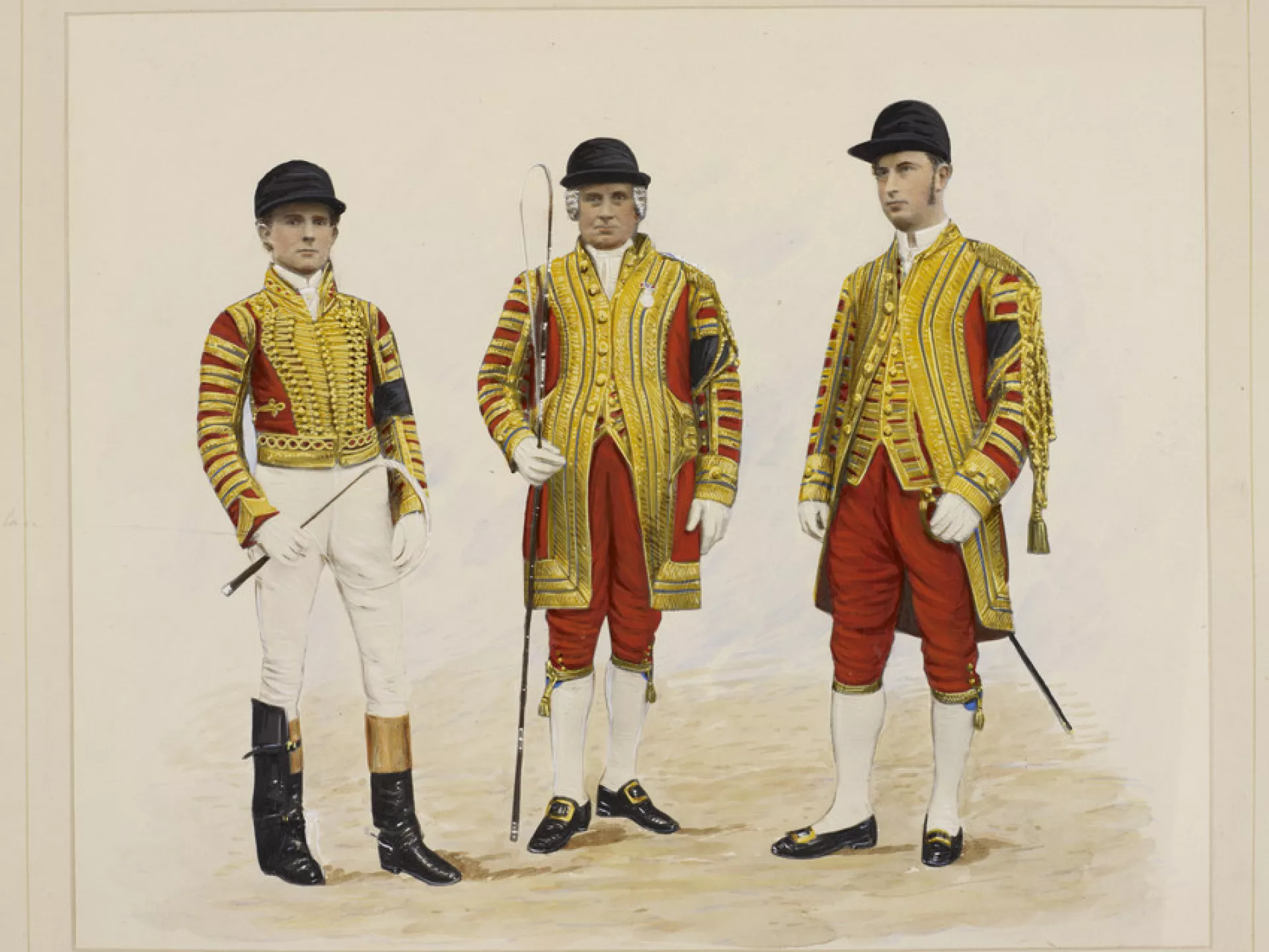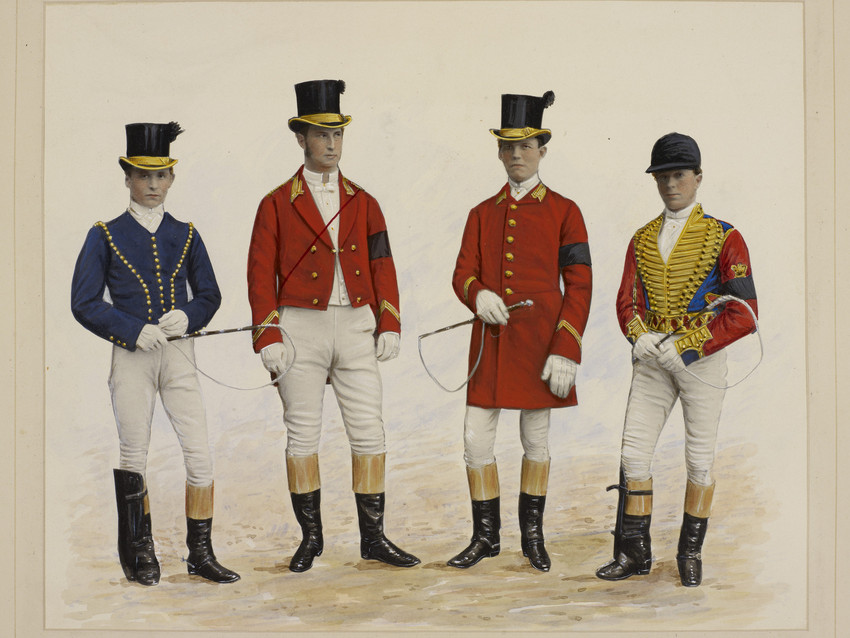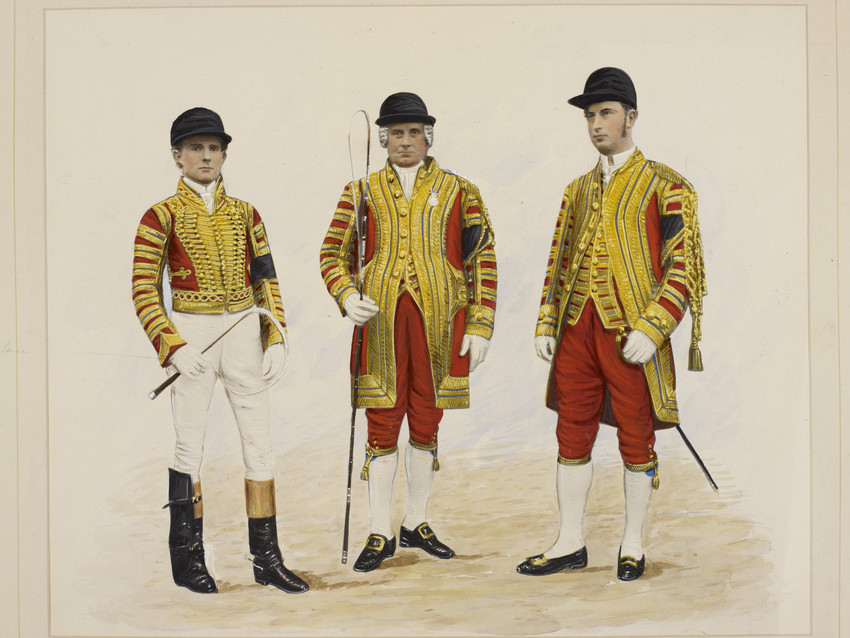![Design for the State Coach Pen and ink and watercolour design for the King's State Coach, shown from the side.
According to the official journal of the Department of the Master of the Horse for 1760, ‘At the Commencement of this Reign [25 October 1760] a very superb State Coa](https://cmsadmin.rct.uk/sites/default/files/lead-image/trail/855159-1546858757.jpg)
Royal Mews
Explore objects related to the Royal Mews
Liveries worn by Royal Mews staff at the time of Queen Victoria's Golden Jubilee
Queen Victoria celebrated her Golden Jubilee in 1887. This was a moment of national celebration that saw the formality and colour of a significant royal event return to central London. Highly decorated royal uniforms, known as ‘liveries’, such as those covered in gold braid worn by the State Coachman, had not been worn since the death of Prince Albert, twenty-six years earlier in 1861. Therefore, these images are important records of the Royal Mews liveries in the late nineteenth century.
The first image shows the full state liveries worn by a postilion, a coachman and a footman. The second shows less formal livery: the blue coats worn by postilions when the grooms and footmen wear scarlet livery, and on the right-hand side, the Ascot livery, with its red and blue wool with gold frogging, worn during royal visits to the racecourse near Windsor Castle. Hand-colouring has been applied to these photographs. All the members of staff are identifiable, including the State Coachman, George Payne, with his Victoria Faithful Service Medal pinned to his livery. He joined the Royal Mews aged fourteen in 1838, a year after Queen Victoria’s accession, and was awarded a bar to his Faithful Service Medal in 1887. Experienced coachmen who had worked with the same horses and carriages over many years were valued members of staff; in particular, experience driving the Gold State Coach was highly prized, with certain coachmen being brought back from retirement for large royal occasions.










